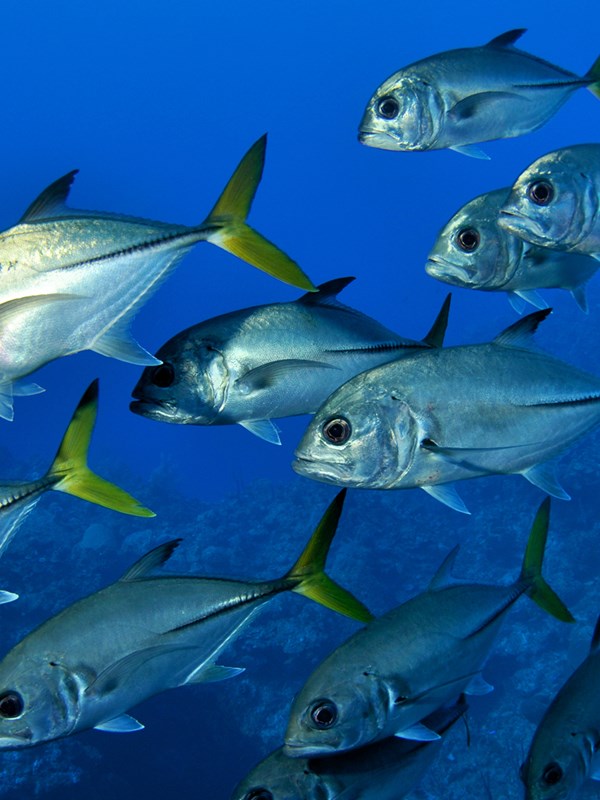
Horse-Eye Jack
Scientific Name Caranx latus
Native To Subtropical coasts of the Atlantic Ocean
Habitat Coastal and outer coral reefs
Diet Small fish, shrimp and other invertebrates
Size and Age Up to 101 cm (39.7 in) long
Natural History
Like other trevallies and jacks, horse-eye jacks have silver elongated bodies and triangular pectoral, anal, and dorsal fins. Their most unique feature are their large eyes. Horse-eye jacks can be gregarious and bold, especially when looking for food. They often trap their prey in pier pilings to prevent escape, making for an easier hunt.
Least Concern

Conservation Status
Though harvesting might affect local populations of the horse-eye jack, this fish is common and widely distributed. Because there are no known major threats, it is considered to be of “Least Concern” by the International Union for Conservation of Nature (IUCN).
Interesting Facts
- Horse-eye jacks can swim in fresh water.
- They are generally wary of scuba divers and will move away slowly as divers approach.
